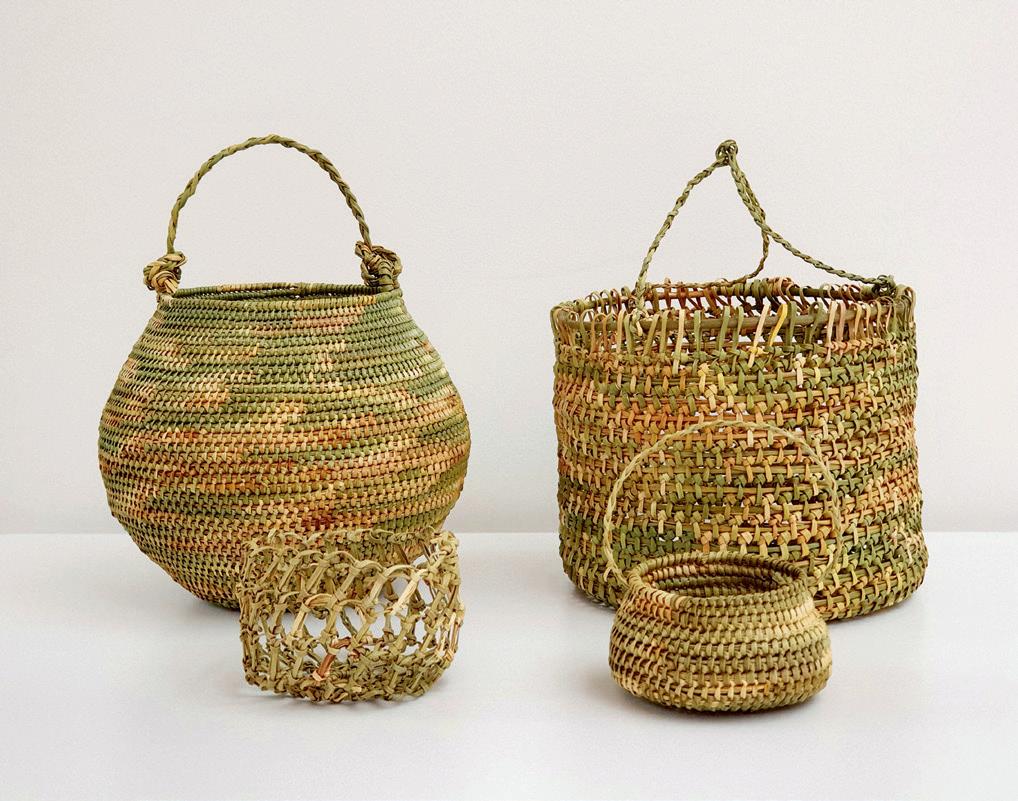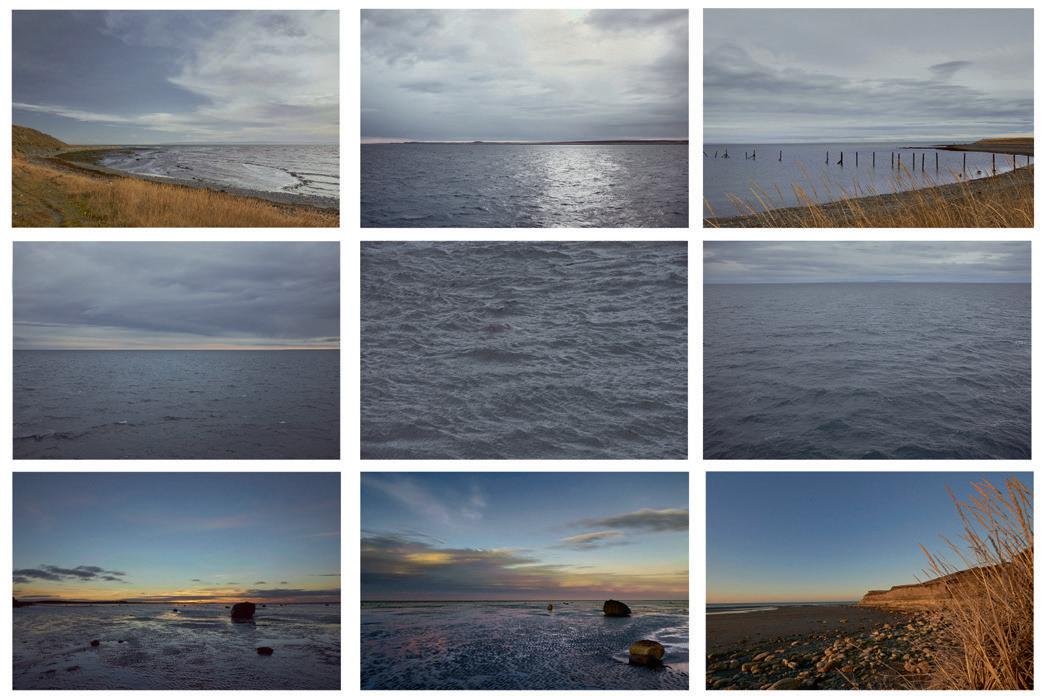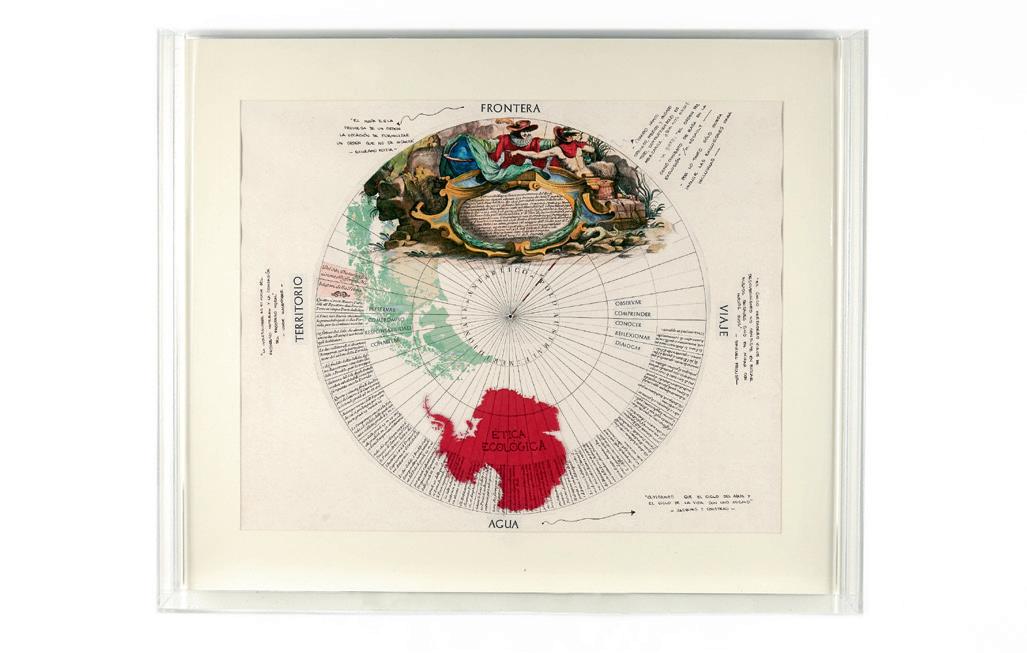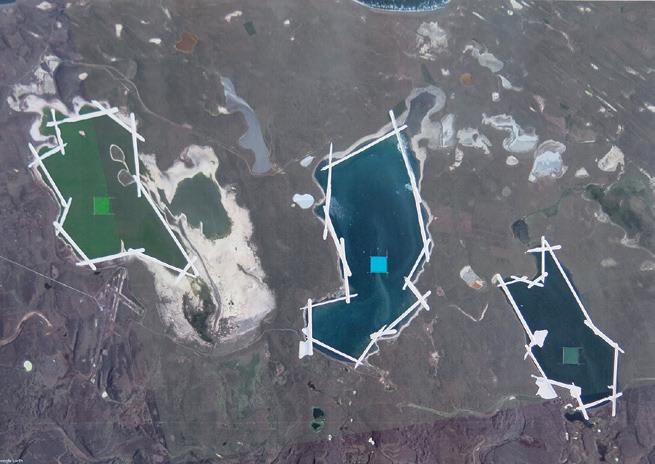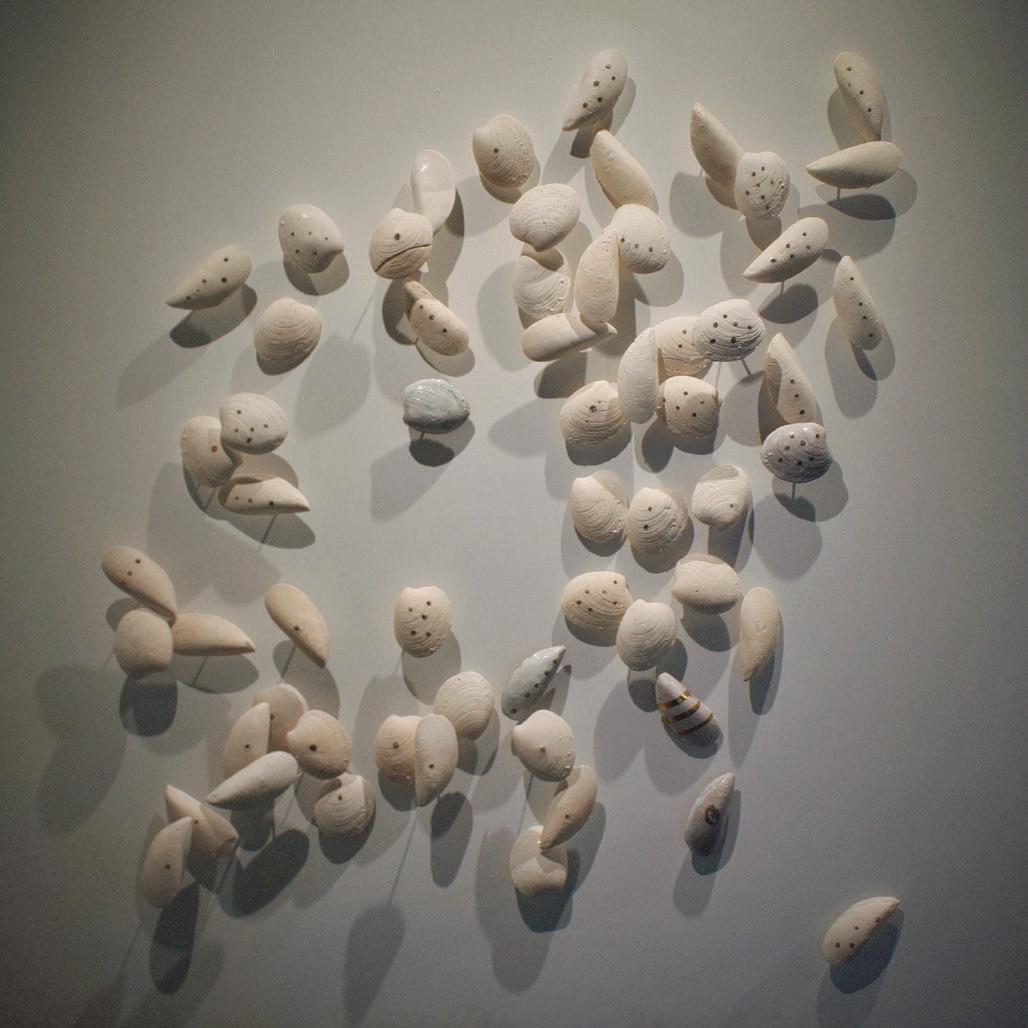
4 minute read
Estrecho de Magallanes: la frontera de agua Patricia Alonso Pajuelo y Fernando Sáez Lara
ESTRECHO DE MAGALLANES LA FRONTERA DE AGUA
Se cumplen 500 años del primer viaje de circunnavegación de la Tierra (1519-1522), una excelente excusa para tomarle el pulso al panorama cultural y social del planeta en que vivimos, con sus luces y sus sombras, escuchando las voces de las comunidades que habitan en los lugares a los que llegaríamos si repitiéramos hoy ese viaje. Recordando también las que no podemos escuchar, porque la colonización acabó con ellas.
Advertisement
Hemos puesto en marcha para ello Démosle la vuelta al mundo, un ciclo integrado por varias exposiciones a lo largo de esos tres años. Tras Rio somos nós! Los museos comunitarios de Río de Janeiro y el “giro decolonial” la primera de esas “paradas”, nos adentramos ahora en el estrecho de Magallanes para conocer la historia de las culturas originarias de esta extrema región –kawésqar, yagán, selk’nam y aónikenk o tehuelches meridionales–, gracias a una selección de objetos de la colección del MNA y a las fotografías de Leopoldo Pizarro, y para entender los retos de sostenibilidad a los que se enfrenta, a través de las obras de los artistas actuales agrupados en la Plataforma Vértices.
La expedición de Magallanes atraviesa el estrecho que lleva su nombre en noviembre de 1520. Fueron los primeros europeos que alcanzaron el extremo sur del continente americano. El primer encuentro con los pueblos originarios de la Patagonia tuvo lugar unos meses antes, en abril de 1520, en la bahía de San Julián (Argentina). El cronista de la expedición, Antonio Pigafetta, describe así a los tehuelches: “Un día, de pronto, descubrimos a un hombre de gigantesca estatura, el cual, desnudo sobre la ribera del puerto, bailaba, cantaba y vertía polvo sobre su cabeza (…) Era tan alto él, que no le pasábamos de la cintura, y bien conforme (…) El capitán general llamó a los de este pueblo «Patagones»” (Pigafetta, 1985: 64-69). El término que elige Magallanes para designar a los tehuelches tiene su origen en el gigante Patagón, un personaje del libro de caballerías Primaleón, y con ese nombre también se conocerá en Europa la zona más meridional de América. Nace así uno de los mitos más populares sobre el continente, el de los gigantes de la Patagonia. Los tehuelches, con una talla media de 175 cm, son altos, pero no gigantes.
STRAIT OF MAGELLAN: THE WATER BORDER
500 years have passed since the first circumnavigation of the Earth (1519-1522), an excellent excuse to take the pulse of the cultural and social panorama of the planet in which we live, with its lights and its shadows, listening to the voices of the communities that live in the places we would reach if we repeated that journey today. Also remembering those that we cannot hear, because colonization ended them.
We have prepared for it Let’s Turn Around the World, a cycle made up of several exhibitions throughout those three years. After Rio somos nós! The Community Museums of Rio de Janeiro and the “Decolonial Turn”, the first of those “stops”, we are now entering the Strait of Magellan to learn about the history of the First Peoples of this extreme region –Kawésqar, Yagán, Selk’nam and Aónikenk or Southern Tehuelches–, thanks to a selection of objects from the MNA collection and photographs by Leopoldo Pizarro, and to understand the sustainability challenges facing this region through the works of current artists grouped in the Plataforma Vértices.
Magellan’s expedition crosses the strait that bears his name in November 1520. They were the first Europeans to reach the southern end of the American continent. The first meeting with the First Peoples of Patagonia took place a few months earlier, in April 1520, in the bay of San Julián (Argentina). The expedition’s chronicler, Antonio Pigafetta, describes the Tehuelches as follows: “One day, suddenly, we discovered a man of gigantic stature, who, naked on the shore of the port, danced, sang and poured dust on his head (…)He was so tall, that we did not pass his waist, and well built (…)The captain general called these people «Patagones»” (Pigafetta, 1985: 6469). The term that Magellan chooses to designate the Tehuelches has its origin in the giant Patagón, a character from the Primaleón chivalric romance, and with that name the southernmost area of America will also be known in Europe. Thus was born one of the most popular myths about the continent, that of the giants of Patagonia. The Tehuelches, with an average height of 175 cm, are tall, but not gigantic.
Historie d’un voyage aux isles Malvines, fait en 1763 & 1764, avec des observations sur le detroit de Magellan et sur les Patagon’s.
Estampa del libro de Dom Pernetty, publicado en 1770. Reproducción de la biblioteca del Museo Arqueológico Nacional. Print from Dom Pernetty’s book, published in 1770. Reproduction of the library of the Museo Arqueológico Nacional.

